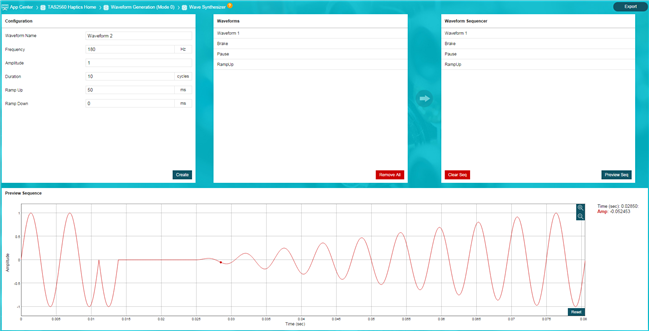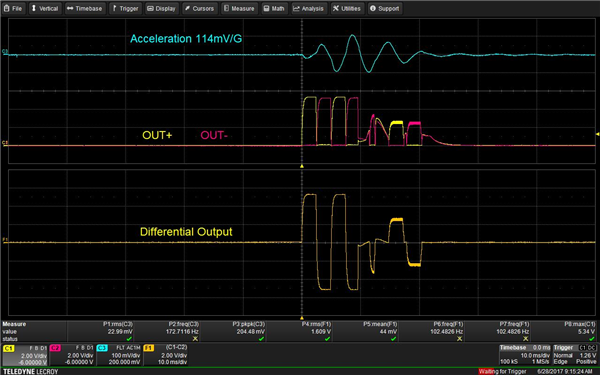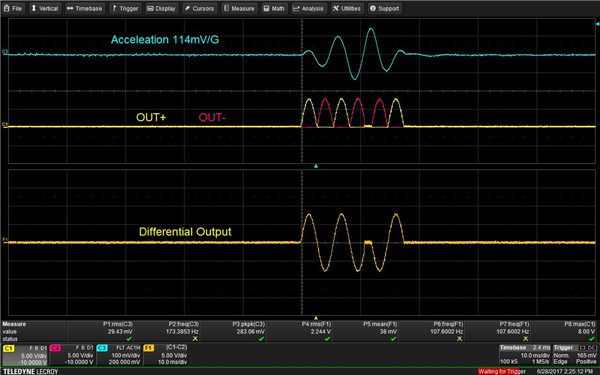SSZT841 December 2017 TAS2557 , TAS2560
In my last blog post, I introduced new actuator technology and briefly talked about the need for higher-voltage drivers. In this post, I’ll go into more detail about these high-voltage drivers and four system considerations – waveform synthesis, waveform effects, delay time and actuator placement – that you should keep in mind while implementing quality haptics in your system.
Designers often decide to include haptics in their systems without realizing the number of considerations. You need to design your product around the haptic system – and not vice versa – because haptics is one of the main ways that users interact with their devices. In addition to all the mechanical challenges associated with haptics, the two main decisions you make are choosing the actuator and amplifier. The actuator will be limited by form factor and performance, so I will talk about this later. For this post, I assume you are interested in using linear resonance actuators (LRAs) that you can drive up to 8V or more. TI’s haptic portfolio includes Smart Amps which can provide 8V from a single cell battery, such as the TAS2560 and TAS2557 audio amplifiers. These amplifiers include features such as low-latency startup times, high-efficiency output and superior software support.
Waveform Synthesis
 Figure 1 TAS2560 Waveform
Synthesizer
Figure 1 TAS2560 Waveform
SynthesizerWaveform Effect
System Delay Time
 Figure 2 Signal Delay Path
Figure 2 Signal Delay PathActuator Placement
 Figure 3 LRA Placement in a Smartphone
Figure 3 LRA Placement in a SmartphoneFigure 4 and Figure 5 show the driving of an actuator using a 5.1Vp haptics driver versus the TAS2560 (8Vp) Class-D audio amplifier, respectively. The drive signal is ~10ms for both figures, but the acceleration for the TAS2560 is 2.5G compared to 1.8G for the haptics driver. That is a 32% increase in acceleration.
 Figure 4 Acceleration Profile for the Haptics Driver
Figure 4 Acceleration Profile for the Haptics Driver Figure 5 Acceleration Profile for the TAS2560 Class-D Audio Amplifier
Figure 5 Acceleration Profile for the TAS2560 Class-D Audio AmplifierThere are some significant design considerations before you can start implementing haptics in your design. In your next design, I hope you consider implementing these new LRAs, which are capable of much stronger haptic feedback and can provide a better user experience.
Additional Resources
- Download the TAS2560 and TAS2557 data sheets.
- If you have any questions about haptic design visit the TI E2E™ Community Haptics forum.